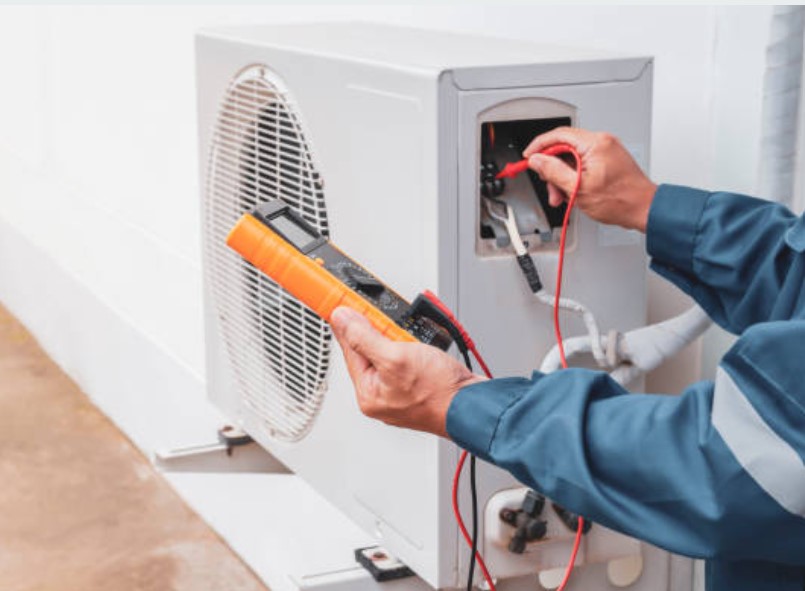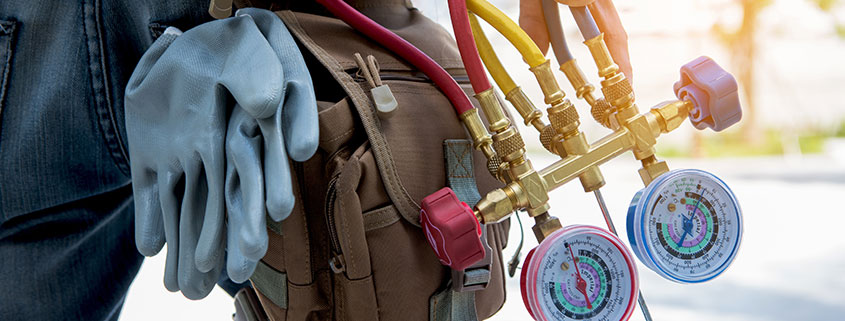Maximize Efficiency from Your heat pump installation ooltewah tn
Maximize Efficiency from Your heat pump installation ooltewah tn
Blog Article
How a Warmth Pump and Heating System Collaborate to Enhance Your Home's Heating Performance
Recognizing how a warmth pump and heating system interact is vital for homeowners looking for effective home heating services. Each system has its strengths, supplying a balanced technique to home comfort. The warmth pump excels in modest temperatures, while the heater delivers quick heat during extreme cold. This harmony not just lowers energy prices but likewise enhances the life expectancy of both devices. What aspects affect this collaboration, and just how can property owners optimize their benefits?
Comprehending Warmth Pumps: How They Function
Lots of individuals may be unknown with their internal operations, heat pumps play a vital duty in modern heating systems. These gadgets run by moving warmth from one location to another, using the concepts of thermodynamics. In chillier months, a heatpump removes warmth from the outdoors air, ground, or water, and transfers it inside to heat the living room. Conversely, during warmer months, it can reverse the procedure, working as an air conditioner by removing warm from inside to the outside.Heat pumps are composed of an evaporator, development, compressor, and condenser shutoff. The cooling agent within the system absorbs heat as it vaporizes at reduced temperature levels and stress. The compressor after that boosts the pressure and temperature of the refrigerant, allowing it to release warmth as it condenses. This reliable procedure can considerably minimize energy consumption compared to typical home heating techniques, making heatpump a sustainable choice for climate control in homes.
The Function of Furnaces in Home Home Heating
Heaters play an essential role in home heating by giving a reliable resource of heat during the colder months. They run by producing warm through burning or electrical resistance, distributing it throughout the home via air ducts or radiant systems. The efficiency of a heater is commonly determined by its Annual Gas Usage Efficiency (AFUE) ranking, which suggests how properly the system transforms gas right into heat.Furnaces can use various energy resources, consisting of all-natural gas, oil, electrical energy, or propane, enabling homeowners to pick the most appropriate option for their requirements. Unlike heat pumps, which may struggle in severe cold, heating systems maintain constant efficiency, guaranteeing that interior temperatures stay comfy no matter outside problems. Additionally, contemporary heaters typically come outfitted with advanced innovation, such as wise thermostats and variable-speed blowers, boosting their performance and responsiveness. This flexibility makes heaters an important part in all-encompassing home heating techniques.

Advantages of Utilizing Both Systems With Each Other
Incorporating the staminas of both furnaces and warmth pumps can bring about a much more reliable and effective home heating solution. Making use of both systems enables house owners to capitalize on the heat pump's energy performance throughout milder temperatures while depending on the furnace for even more extreme cold conditions. This dual technique can significantly reduce power costs, as warmth pumps consume much less electrical power than traditional home heating techniques when temperatures are moderate.Additionally, making use of both systems together can boost comfort degrees in the home. Heat pumps can give constant, also heating, while furnaces can swiftly raise ambient temperature levels when needed. Additionally, the assimilation of both systems can prolong the lifespan of devices by reducing damage on each system, as they share the workload. Inevitably, homeowners can take pleasure in a well balanced, affordable home heating remedy that adjusts effortlessly to differing weather, making sure a cozy and inviting home throughout the wintertime months.
How Warmth Pumps and Furnaces Complement Each Other
They create a complementary heating system that makes best use of performance and convenience when homeowners integrate heat pumps and furnaces. Heat pumps operate by moving warmth from the outside air or ground, making them extremely effective in modest environments. They stand out throughout milder temperature levels, supplying economical home heating. On the other hand, heating systems produce warm through combustion or electric resistance, supplying solid, immediate warmth throughout severe chilly conditions.The mix of these two systems allows for dynamic changes based upon temperature level changes. During warmer months or milder winter days, the heatpump can take the lead, preserving power and decreasing costs. As temperature levels decline, the heating system can perfectly engage, making certain constant warmth throughout the home. This harmony not just maximizes power use but also improves the lifespan of both systems, as each unit runs within its suitable performance array. With each other, they create a well balanced atmosphere that adjusts to varying climate needs.
Optimizing Performance: Tips for Homeowners
House owners can improve their home heating effectiveness through numerous useful methods. Developing a normal maintenance routine, integrating clever thermostat innovation, and implementing reliable insulation and sealing options are essential actions. These steps not just improve convenience but likewise lower energy prices.
Regular Upkeep Set Up
To ensure optimal home heating effectiveness, developing a regular maintenance timetable is vital for any kind of home. Property owners need to prioritize routine examinations of both heat pumps and heating systems to establish peak efficiency. This includes altering air filters each to 3 months, as clogged filters can considerably lower performance. Additionally, scheduling expert upkeep a minimum of when a year permits specialists to determine and resolve potential issues before they intensify. Home owners need to also clean the heat pump's outside system to avoid particles build-up that can prevent airflow. By adhering to a normal upkeep timetable, home owners not just boost their furnace' performance yet additionally extend their lifespan, causing better convenience and lowered power prices throughout the chillier months.
Smart Thermostat Combination
Incorporating a clever thermostat into a home heating system can greatly boost energy efficiency, specifically as it permits accurate control over temperature setups. These gadgets can learn the home owner's routine and preferences, instantly changing the temperature level to enhance comfort while decreasing energy use. As an example, they can lower home heating during times when the home is unoccupied, lowering unneeded consumption. Many wise thermostats also give real-time energy use data, allowing homeowners to make educated decisions regarding their home heating practices. In addition, remote access using smart device applications enables individuals to change settings from anywhere, making certain Our site the home is cozy upon return. Generally, clever thermostat integration not just enhances convenience but considerably adds to energy financial savings and effectiveness.
Insulation and Securing Solutions
Smart thermostats play an important role in energy performance, yet their effectiveness can be substantially boosted by appropriate insulation and securing solutions. Home owners need to prioritize protecting attic rooms, floorings, and wall surfaces to reduce warmth loss. Premium insulation materials, such as spray foam or fiberglass, can substantially boost thermal resistance. In addition, sealing gaps around ducts, doors, and windows avoids cold air seepage and heat escape. Weatherstripping and caulking work methods for addressing these leakages - furnace replacement. Regular inspections for air leakages, along with making use of blower door examinations, can help recognize issue areas. By buying insulation and securing, property owners can maximize the performance of their furnace, ultimately leading to lowered energy intake and reduced utility bills
Common Misconceptions About Warmth Pumps and Furnaces
What false impressions surround warm pumps and heating systems? Numerous people mistakenly think that heatpump are ineffective in chillier climates. Actually, modern-day heat pumps are designed to operate efficiently even in reduced temperature levels, providing dependable home heating throughout wintertime. Another usual myth is that furnaces are always more efficient than warm pumps. Nevertheless, this depends upon the details power resources and performance rankings of my explanation the devices in question. Some might also believe that using both systems concurrently is unnecessary, yet actually, this combination can optimize heating performance, especially during severe weather. Additionally, individuals often presume that heatpump call for consistent upkeep, when actually, they have comparable maintenance needs to typical heating systems. By debunking these myths, property owners can make more informed choices regarding their heating alternatives, eventually leading to boosted convenience and power performance in their homes.
Maintenance Considerations for Combined Equipments

Frequently Asked Questions
Can Warm Pumps Work Successfully in Extremely Cold Climates?
Heatpump can battle in very cold environments as a result of decreased effectiveness and heat removal limitations. Improvements in modern technology have led to models designed for much better efficiency in such conditions, improving their practicality in severe settings.
How Lengthy Do Warmth Pumps and Furnaces Generally Last?
Heatpump commonly last 15 to two decades, while heaters have a life-span of 15 to 30 years. Routine upkeep can prolong their long life, guaranteeing reliable operation and decreasing the requirement for early replacements.

What Is the Average Price of Installing Both Systems?
The average cost of mounting both a heatpump and a heating system typically ranges between $5,000 to $10,000 - heat pump installation ooltewah tn. Aspects influencing this cost consist of system size, installation complexity, and local labor rates
Are There Tax Incentives for Making Use Of Energy-Efficient Home Heating Systems?
Numerous home owners ask regarding tax motivations for energy-efficient heating systems. Numerous federal and state programs typically offer credit scores or discounts, motivating the fostering of sustainable technologies to lower energy usage and advertise ecological duty.
Exactly how Do I Pick the Right Size Heatpump and Furnace?
Choosing the right dimension heatpump and heater entails determining the home's square video, taking into consideration insulation high quality, and evaluating local environment. Consulting an expert can assure optimal system performance and energy performance based upon certain requirements. ductless mini splits. Understanding exactly browse around this web-site how a heat pump and heater job with each other is crucial for home owners looking for effective heating services. In cooler months, a warm pump removes warmth from the outside air, ground, or water, and transfers it inside to warm the living room. When house owners integrate warm pumps and furnaces, they develop a corresponding heating system that takes full advantage of efficiency and convenience. Warm pumps operate by transferring warmth from the outside air or ground, making them highly efficient in modest climates. Warmth pumps can battle in incredibly cold environments due to decreased efficiency and warmth extraction constraints
Report this page